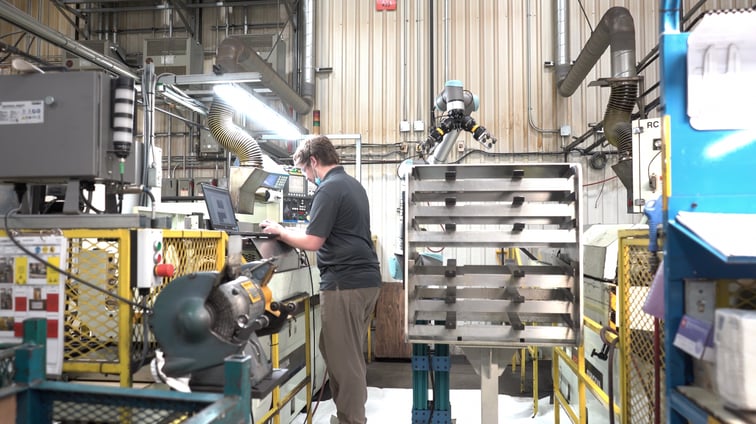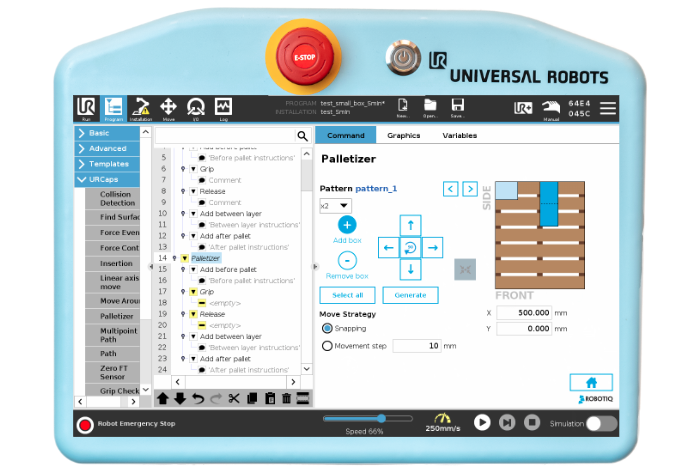Automation First Strategy: How to Win in the Future of Work

Posted on Dec 13, 2022 in Automation
5 min read time
The landscape of work and business is constantly changing. Every time a new technology or way of working takes its hold on an industry, we all have to adapt our operations to keep up.
One change you might not have considered before is implementing an "automation first" strategy.
Automation first means that, when possible, aim to automate tasks within your business. This can help to streamline your processes and reduce human error. Over the past decades, automation has already played a huge role in the workplace and it will only become more important in the years to come.
How can an automation first strategy help you succeed in your industry?
What does such a strategy mean for the people in your business?
Does automation first make sense for your company?
Let's have a look at this relatively recent change towards a more strategic use of automation.
What is an automation first strategy?
An automation first strategy is an operational approach where automation is considered to solve problems before other options. This is done through the use of technology such as robotics, artificial intelligence, and machine learning. The approach is becoming increasingly popular now the benefits of automation are widely recognized.
When applied correctly, an automation first strategy can help you reduce costs, improve quality, and flexibly handle changing demand for your products.
But it's important to understand what an automation first strategy isn't.
It doesn't mean that automation should replace all human work. Instead, automation first is about using automation technology to supplement and enhance the work that people are already doing.
Automation frees up time for human workers to focus on more meaningful tasks that make the best use of their skills, such as developing new processes and problem-solving.

What an automation first mindset looks like in practice
You can think of an organization with an automation first strategy as having different priorities than a traditional organization.
When faced with a new problem, an automation first company doesn't immediately consider how humans or basic software can solve the problem. Instead, it considers how a hybrid workforce would be best equipped to solve it.
For example, let's imagine we have a fictional manufacturing company called ABC Goods that produces consumer packaged goods. The problem they are facing is that demand has increased for their products. They don't have the capacity to meet that demand.
A traditional company may look at this problem and see only three options: hire more people, contract out some work to another local manufacturer, or move manufacturing offshore.
An automation first company will instead look at this problem and ask themselves…
Can we use automation to meet the increased demand in-house with the resources we already have?
Not all problems can be solved by automation. But, by considering automation solutions before others, the entire team at ABC Goods becomes more adept at spotting opportunities to use automation.
How can automation first prioritize human strengths?
Some people believe that adding robotics and automation will diminish the work of humans.
In fact, the opposite can be true – robots can improve the quality and enjoyment of the work of humans. When you have an automation first strategy, it helps you to prioritize the unique strengths of humans.
For example, you might have one production line worker who is amazing at technical problem solving. But they spend all their time loading parts into a CNC machine.
Another worker may be exceptional at customer service. But most of their job involves sifting through low-value support questions.
Both workers would benefit from automation as it would allow them to focus on their strengths. The first could benefit from a CNC machine tending robot to load parts into the machines. And the second could benefit from AI customer support bots to handle users' basic questions — ZenDesk found that customer support quality actually increased when adding such automation.
7 tips for implementing an automation first strategy
How do you implement an automation strategy?
The key is to start small and build up gradually. Identify which of your existing processes are most suitable for automation and focus on automating those first.
Here are 7 more handy tips on becoming an automation first company:
-
Win early and often — Start with small, quick wins rather than trying to tackle larger automation projects at first. This will build enthusiasm and momentum while giving the team a chance to learn progressively more challenging projects.
-
Find your automation champion — This person should be someone who sees the value in automation. They can lead your effort to implement an automation first strategy and can keep everyone focused on the goal.
-
Upskill employees and stay ahead of trends — Invest in training and encourage ongoing learning to keep workers up-to-date on new technologies and automation strategies.
-
Create a community around automation — When your people can collaborate, this will speed up the automation process. Automation is most successful when people are working in an environment that encourages collaboration, knowledge sharing, and creativity.
-
Automate error-prone manual processes — Tasks that are prone to human error and take a long time to complete are often suitable candidates for automation. These are usually low-value tasks that people don't enjoy doing.
-
Create an automation playbook — Sharing knowledge is vital for a strong automation first strategy. Document the steps involved in each automation project so that others can learn from it and replicate it if needed.
-
Track progress with analytics tools — Make use of analytics tools to identify potential areas for automation, such as processes that take up a lot of time or have a high error rate. Establish KPIs (key performance indicators) to help to measure progress, as well as identify any areas that need improvement.
The future of work: why automation first companies will win
Adopting an automation first strategy may be one of the best ways to future-proof your business and stay ahead of the competition. When applied correctly, an automation first strategy can improve your production processes and generate a culture of continual improvement in your business.
When everyone in your business recognizes that automation is not being used at the expense of human workers, they can become active participants in making your automation first company a success.
What questions do you have about automation first strategies? Tell us in the comments below or join the discussion on LinkedIn, Twitter, Facebook, or the DoF professional robotics community.








Leave a comment